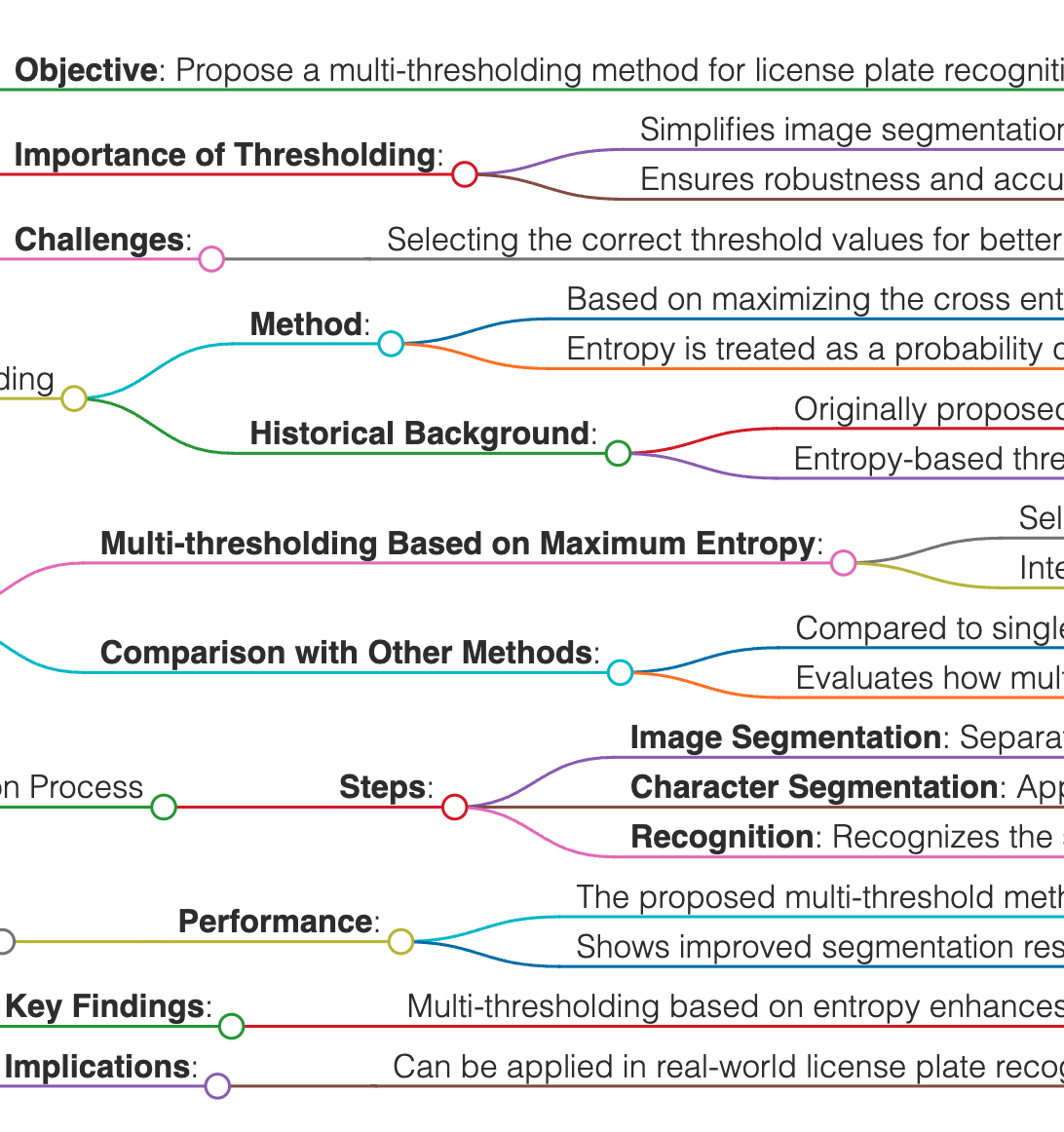Multi-threshold_Approach_for_License_Plate_Recognition_System
https://www.pirahansiah.com/farshid/portfolio/publications/Papers/Multi-threshold_Approach_for_License_Plate_Recognition_System
PDF Download My Conference Paper

Multi-threshold Approach for License Plate Recognition System
1. Introduction
- Objective: Propose an adaptive multi-threshold approach for image segmentation, specifically in object detection.
- Application: Malaysian License Plate Recognition (LPR) system.
- Challenge: Different types of license plates require varied detection techniques depending on the country.
2. Adaptive Multi-threshold Approach
- Key Method:
- Multi Layer Perceptron (MLP) trained by backpropagation to optimize threshold values.
- Finds optimum threshold values by analyzing the peak value from a graph of object count versus threshold ranges.
- Advantages:
- Adaptive to different types of license plates, including single-line and double-line plates with varying fonts.
3. Comparison with Other Threshold Methods
- Other Techniques:
- Kittler and Illingworth’s Threshold
- Potential Difference
- Otsu’s Method
- Performance:
- The adaptive multi-threshold approach improves overall performance compared to these existing methods.
4. License Plate Recognition Process
- Steps:
- Image Segmentation: Applies multi-thresholding to separate the license plate and individual characters.
- Character Segmentation: Uses the threshold values to segment characters within the license plate region.
- Recognition: Classifies the segmented characters to extract the license plate number.
5. Conclusion and Future Work
- Key Findings:
- The proposed adaptive multi-threshold method enhances the performance of the LPR system.
- Future Work:
- Further improvements are underway to accommodate real-time system specifications.